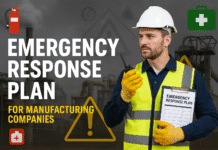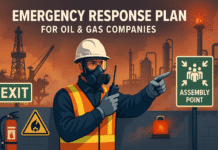
Health and Safety Management Systems: A Comprehensive Guide
Introduction
Health and Safety Management Systems: Health and safety in the workplace are paramount, and it’s not just about compliance; it’s about the well-being of employees and the sustainability of businesses. In this article, we delve into the world of Health and Safety Management Systems (H&SMS) to understand their significance, benefits, and how to establish them effectively.
Understanding Health and Safety Management Systems
Importance of Health and Safety
Workplace safety is more than just a legal requirement; it’s a moral obligation. A well-implemented H&SMS not only ensures legal compliance but also prioritizes the physical and mental well-being of employees.
Key Components of a Management System
To build an effective H&SMS, it’s crucial to understand its components, including policies, procedures, risk assessments, and performance metrics.
Benefits of Implementing an Effective System
Reducing Workplace Accidents
An efficient H&SMS significantly reduces the number of workplace accidents, which can save lives and protect a company’s reputation.
Ensuring Legal Compliance
Compliance with local, state, and federal regulations is mandatory, and an H&SMS ensures your organization stays on the right side of the law.
Improving Employee Morale
A safe and healthy workplace fosters trust and loyalty among employees, ultimately boosting morale and productivity.
How to Establish a Health and Safety Management System
Identify Hazards and Risks
The first step in building an H&SMS is identifying potential hazards and risks unique to your workplace.
Setting Objectives and Targets
Establish clear objectives and performance targets that align with your organization’s overall goals.
Creating Policies and Procedures
Develop robust policies and procedures that guide employees on safe practices and responses to emergencies.
Training and Education
Proper training and education are essential for employees to understand their roles in maintaining a safe work environment.
Monitoring and Measurement
Regular Audits and Inspections
Regular audits and inspections help identify areas for improvement and ensure compliance.
Incident Reporting and Investigation
Efficient incident reporting and investigation procedures are critical for preventing future accidents.
Continuous Improvement
Corrective and Preventive Actions
Learn from mistakes and near misses by implementing corrective and preventive actions.
Management Review
Regular reviews by management ensure that the H&SMS remains effective and relevant.
Case Studies
Explore real-world case studies of organizations that successfully implemented H&SMS and the valuable lessons they learned.
Challenges Faced in Implementing H&S Management Systems
Resistance to Change
Employees may resist new safety protocols, so effective communication and training are essential.
Resource Constraints
Limited resources can be a hurdle, but creative solutions can help overcome this challenge.
Future Trends in Health and Safety Management Systems
Technology Integration
The integration of technology, such as IoT devices and AI, is set to revolutionize H&SMS.
Sustainability and Environmental Considerations
Incorporating environmental sustainability into H&SMS aligns with global efforts to protect the planet.
Conclusion
In conclusion, implementing a robust Health and Safety Management System is not just a legal requirement but a fundamental responsibility. By prioritizing the well-being of employees and embracing innovation, organizations can create safer workplaces and build a sustainable future.
ISO 45001: Occupational Health and Safety Management System
ISO 45001: All You Need To Know
Food Safety and Hygiene Training
Transport and Road Safety Training
Chemical Handling and Hazardous Materials Training
FAQs
- What is the primary goal of a Health and Safety Management System?The primary goal is to ensure the safety and well-being of employees while complying with legal requirements.
- How can organizations overcome resistance to change when implementing H&SMS?Effective communication, training, and involving employees in the process can help address resistance.
- Are there industry-specific H&SMS standards?Yes, various industries have specific standards to address their unique hazards and risks.
- How can technology enhance H&SMS?Technology can provide real-time monitoring, data analysis, and predictive capabilities to improve safety.
- What role does sustainability play in modern H&SMS?Sustainability is increasingly integrated into H&SMS to align with environmental protection goals and corporate responsibility.





















